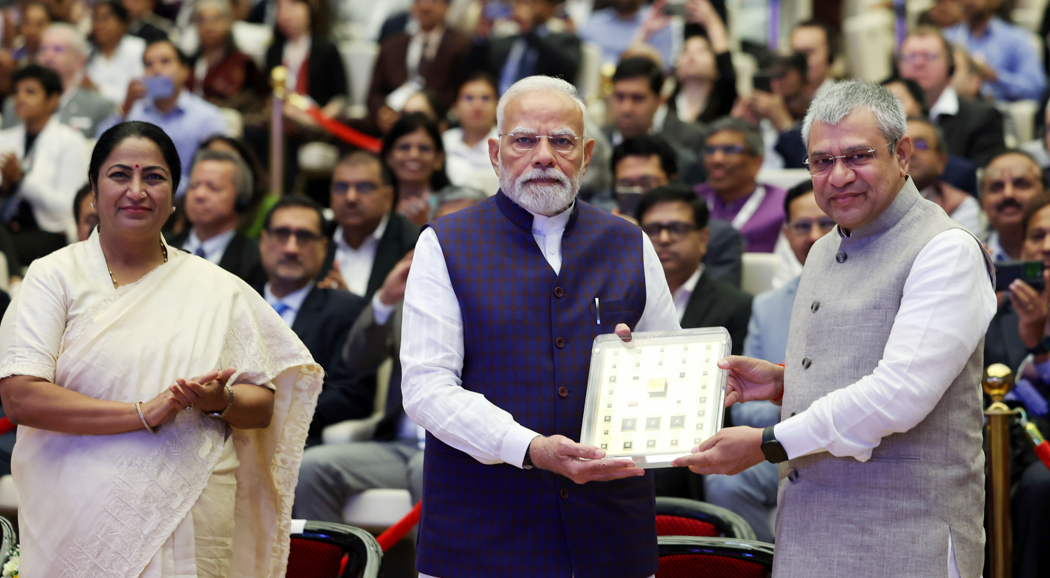Union Minister for Electronics & Information Technology Ashwini Vaishnaw on Tuesday presented the first made-in-India 32-bit processor chip to Prime Minister Narendra Modi during the inaugural ceremony of Semicon India 2025.
The presentation marked a milestone in India’s semiconductor journey and underscored the government’s efforts under the India Semiconductor Mission.
Highlighting the rapid progress in the sector, Vaishnaw said, “Today, construction of five semiconductor units is underway at a rapid pace. The pilot line of one unit is already complete, and we just presented the first made-in-India chip to the Hon’ble Prime Minister. Two more units will begin production in the coming months, while the design of five additional units is progressing well. Ecosystem partners for chip manufacturing are all here.”
He stressed that India is emerging as a beacon of stability in an uncertain global environment. “We are living in unprecedented times. Global policy turmoil has created huge uncertainty. In these turbulent times, India stands as a lighthouse of stability and growth. You should come to India because our policies are stable,” he said.
Reflecting on the early days of the mission, the minister recalled, “Just a few years ago, we met for the first time to make a new beginning. Driven by our Prime Minister’s far-sighted vision, we launched the India Semiconductor Mission. We brought together a team of globally renowned industry leaders and began this journey with a laser-sharp focus on execution. And here we are today—in just three and a half years—the world is looking at India with confidence.”
Inviting global investors to join India’s semiconductor growth story, Vaishnaw pointed to the rising demand in the country. “Our electronics production has grown six times in the last decade, while electronics exports have grown eight times. Demand for semiconductors is rising every quarter as Make in India drives new plants across sectors. This is the time to be in India,” he said.
He further emphasized that the foundation of this “foundational industry” has been firmly laid, supported by a transparent and professional policy framework. “We have managed the semiconductor mission in a professional and transparent way, covering all major manufacturing sectors—from power and consumer electronics to automobiles, defense, and strategic industries. Our decisions are backed by rigorous analysis by professionals from the semiconductor industry,” he added.
(With inputs from ANI)










